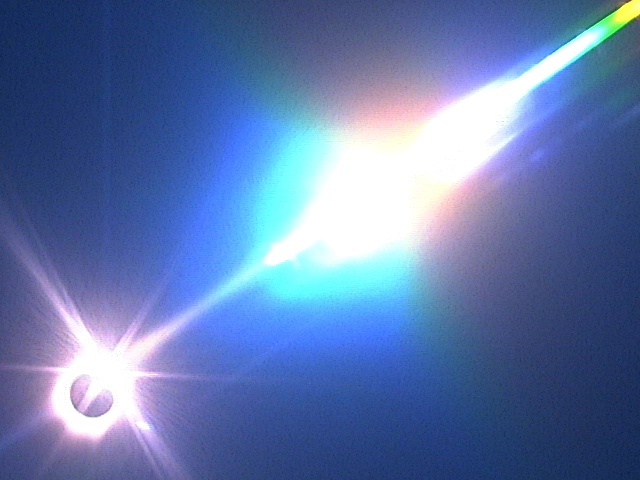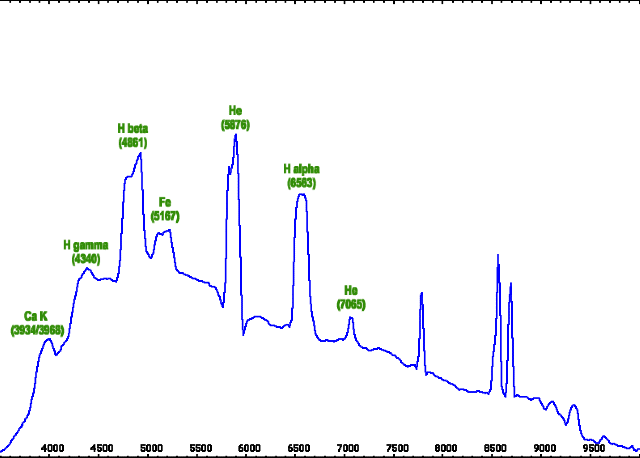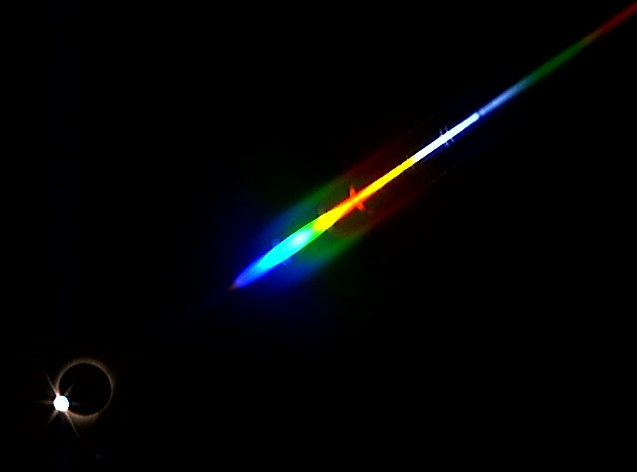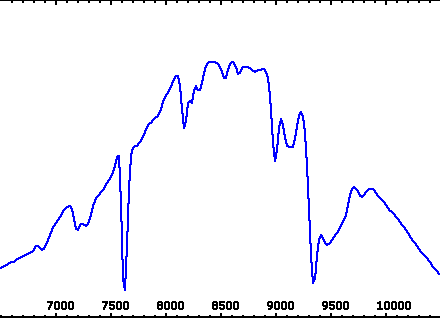|
SECOND CONTACT The exposure was far too high at the start of totality. Although no useful scientific data can be got from the image, the result is quite stunning.
Click on the image for a short video of second contact at actual speed. |
|
|
|
2nd CONTACT FLASH SPECTRUM The first order spectrum is over exposed. However the shorter wavelengths of the second order are also visible and clearly show a number of emission lines in the flash spectrum from the Chromosphere |
|
|
CORONA Because of the extended nature of the Corona, the spectrum is diffuse and poorly defined. The expected location of the highly ionised Fe xiv line, produced by the very high temperatures in the Corona, is marked |
|
|
3rd CONTACT FLASH SPECTRUM The flash spectrum at third contact was correctly exposed and clearly shows emission lines from the Hydrogen Balmer series and from Helium (marked). This is the line which famously identified the element in the sun before it was discovered on earth. |
|
|
PLOT OF FLASH SPECTRUM This plot is based on combined data from the first and second order spectra at second contact and the first order spectrum at third contact. The lines in the IR are currently unidentified. The broadening of the lines towards the blue end is caused by poor focus. The zero order image was used for focussing, which resulted in optimum focus for the spectrum being in the IR (assumed to be due to a combined effect of field curvature and chromatic aberation in the lens.) |
|
THIRD CONTACT At third contact, spectra from the three components of the sun can be seen. The narrow continuum spectrum produced by the "diamond" in the ring is from the Photosphere - the only spectrum normally visible. The sharp emission lines are from the Chromosphere. The diffuse spectrum is from the Corona
Click on the image for a short video of third contact at actual speed |
|
|
|
PHOTOSPHERE POST 3rd CONTACT The polymer solar filter used for the partial phases has high absorption at the blue end and is increasingly transparent (though still safe for visual use) at near IR wavelengths. |
|
|
No Fraunhofer absorption lines were seen in the visible wavelengths (possible due to the poor focus at this end of the spectrum) A number of absorption lines are clear in the near IR though. These are currently unidentified, but most, if not all are due to absorption by the earth's atmosphere - Telluric lines (Initially it was suspected that these lines might have been caused by the polymer filter but subsequent checks showed no sharp absorption lines due to the filter in the range of sensitivity of the webcam. Note that double sided coated films such as the Baader Solar film show many deep absorption lines in the IR under certain circumstances due to interference effects) |







